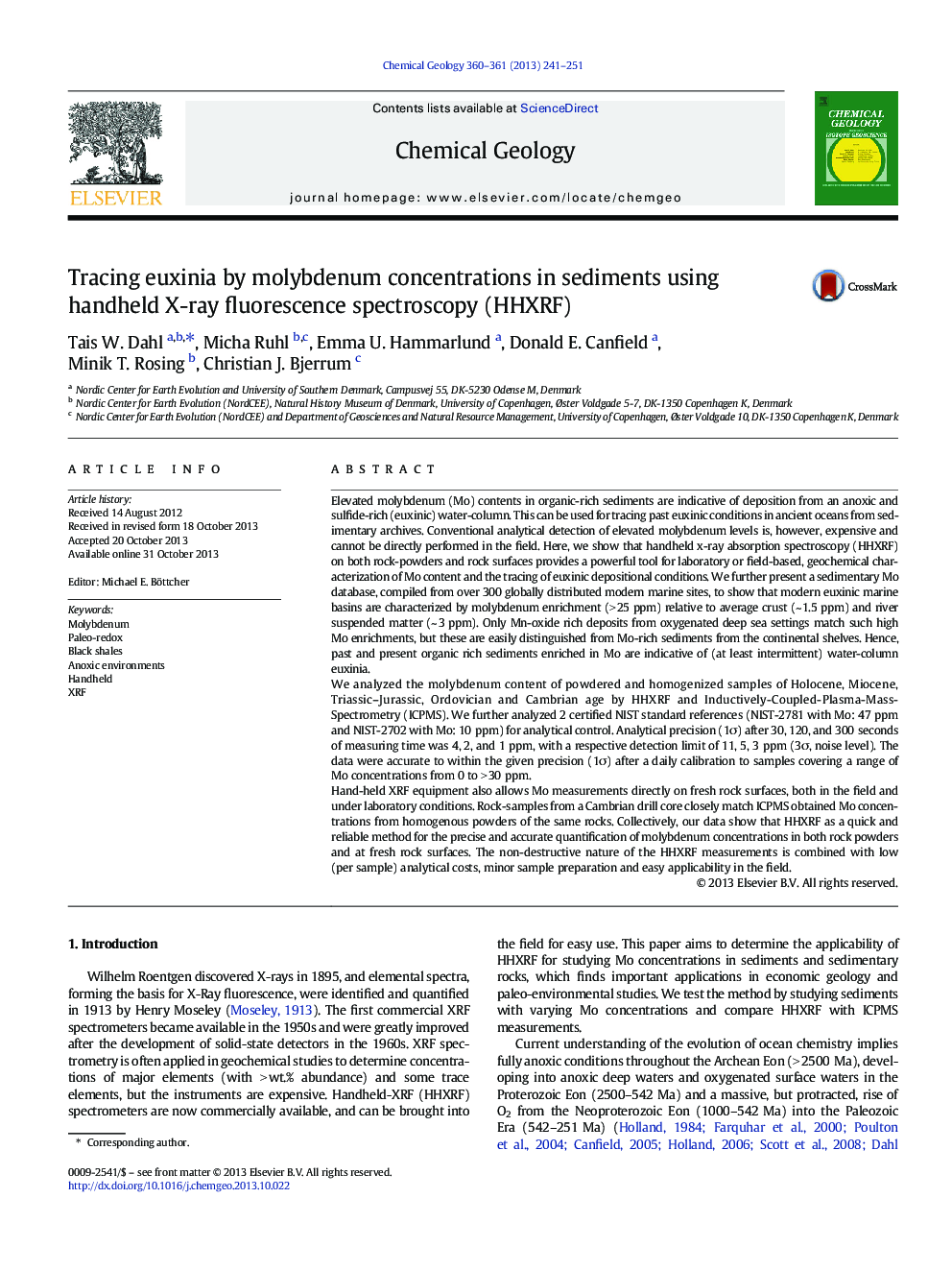| کد مقاله | کد نشریه | سال انتشار | مقاله انگلیسی | نسخه تمام متن |
|---|---|---|---|---|
| 4698874 | 1637609 | 2013 | 11 صفحه PDF | دانلود رایگان |

• Modern organic-rich sediments with > 25 ppm Mo were deposited from sulfidic waters.
• HH-XRF detects > 11 and > 4 ppm Mo in rocks in just 30 and 300 seconds, respectively.
• HH-XRF can be used to reliably identify euxinic sediments in the field.
• HH-XRF records abrupt stratigraphic Mo changes, not recognized with traditional bulk analysis.
Elevated molybdenum (Mo) contents in organic-rich sediments are indicative of deposition from an anoxic and sulfide-rich (euxinic) water-column. This can be used for tracing past euxinic conditions in ancient oceans from sedimentary archives. Conventional analytical detection of elevated molybdenum levels is, however, expensive and cannot be directly performed in the field. Here, we show that handheld x-ray absorption spectroscopy (HHXRF) on both rock-powders and rock surfaces provides a powerful tool for laboratory or field-based, geochemical characterization of Mo content and the tracing of euxinic depositional conditions. We further present a sedimentary Mo database, compiled from over 300 globally distributed modern marine sites, to show that modern euxinic marine basins are characterized by molybdenum enrichment (> 25 ppm) relative to average crust (~ 1.5 ppm) and river suspended matter (~ 3 ppm). Only Mn-oxide rich deposits from oxygenated deep sea settings match such high Mo enrichments, but these are easily distinguished from Mo-rich sediments from the continental shelves. Hence, past and present organic rich sediments enriched in Mo are indicative of (at least intermittent) water-column euxinia.We analyzed the molybdenum content of powdered and homogenized samples of Holocene, Miocene, Triassic–Jurassic, Ordovician and Cambrian age by HHXRF and Inductively-Coupled-Plasma-Mass-Spectrometry (ICPMS). We further analyzed 2 certified NIST standard references (NIST-2781 with Mo: 47 ppm and NIST-2702 with Mo: 10 ppm) for analytical control. Analytical precision (1σ) after 30, 120, and 300 seconds of measuring time was 4, 2, and 1 ppm, with a respective detection limit of 11, 5, 3 ppm (3σ, noise level). The data were accurate to within the given precision (1σ) after a daily calibration to samples covering a range of Mo concentrations from 0 to > 30 ppm.Hand-held XRF equipment also allows Mo measurements directly on fresh rock surfaces, both in the field and under laboratory conditions. Rock-samples from a Cambrian drill core closely match ICPMS obtained Mo concentrations from homogenous powders of the same rocks. Collectively, our data show that HHXRF as a quick and reliable method for the precise and accurate quantification of molybdenum concentrations in both rock powders and at fresh rock surfaces. The non-destructive nature of the HHXRF measurements is combined with low (per sample) analytical costs, minor sample preparation and easy applicability in the field.
Journal: Chemical Geology - Volumes 360–361, 18 December 2013, Pages 241–251